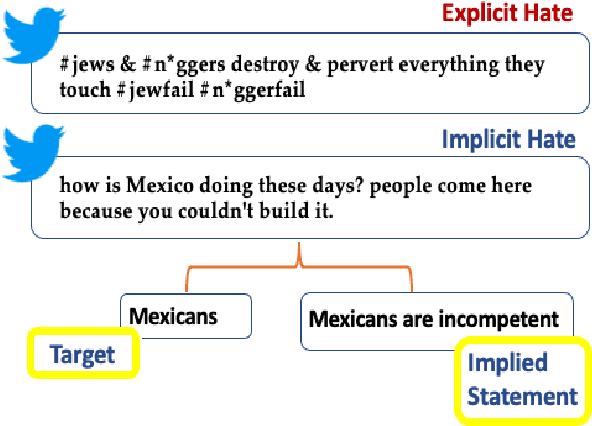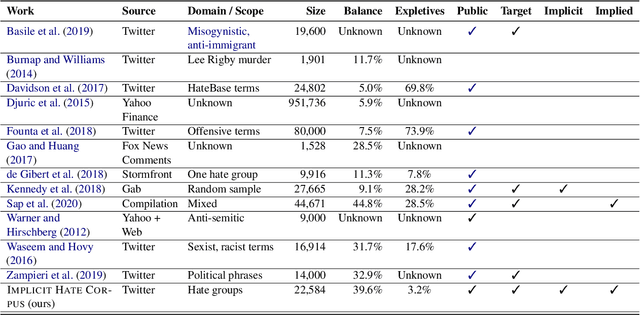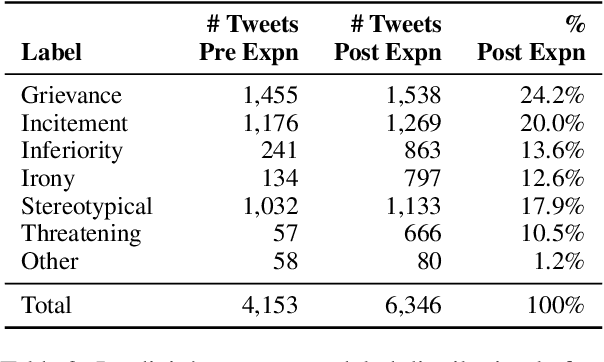Jordyn Seybolt
Latent Hatred: A Benchmark for Understanding Implicit Hate Speech
Sep 11, 2021



Abstract:Hate speech has grown significantly on social media, causing serious consequences for victims of all demographics. Despite much attention being paid to characterize and detect discriminatory speech, most work has focused on explicit or overt hate speech, failing to address a more pervasive form based on coded or indirect language. To fill this gap, this work introduces a theoretically-justified taxonomy of implicit hate speech and a benchmark corpus with fine-grained labels for each message and its implication. We present systematic analyses of our dataset using contemporary baselines to detect and explain implicit hate speech, and we discuss key features that challenge existing models. This dataset will continue to serve as a useful benchmark for understanding this multifaceted issue.
 Add to Chrome
Add to Chrome Add to Firefox
Add to Firefox Add to Edge
Add to Edge